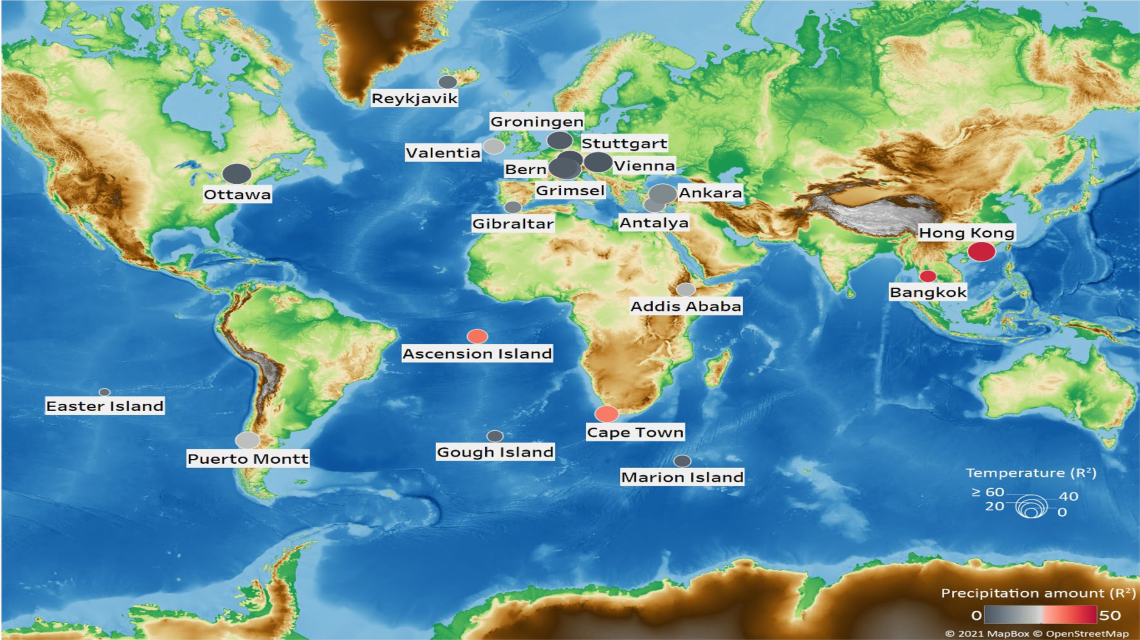At the start of 2018, Cape Town became the world’s first major city to face the prospect of completely running out of fresh water. A succession of droughts attributed to climate change had brought the South African city to its knees, forcing local officials to implement strict water rationing measures and spurring citizens to carefully police their personal water usage. While strong rains did eventually come to relieve the city that June, the crisis brought to the global spotlight the importance of better understanding rainfall patterns in the face of climate change.
The risks posed to water resources from changing climatic conditions are not unique to South Africa, and IAEA scientists are using a global isotope database to reveal the dynamics between temperature and rainfall. They’ve found vast differences around the world, with heavy rains in Bangkok, Thailand, originating from evaporated ocean water, while in Cape Town, the rain derives from powerful storms with water of mixed origin.
Better understanding these relationships and the origin of rain is key to predicting future rainfall patterns around the world. This is one of the IAEA’s many findings recently published in Nature's Scientific Reports Journal, which also showed that patterns found in different sources of water can be used to understand region-specific climate changes in the past, present and future.
“By assessing the isotopic composition of rainfall and combining this information with air temperature we have been able to determine that the distribution of oxygen isotopes in global rainfall is a key indicator of changing climate dynamics that can be used to understand region-specific climatic changes,” said Yuliya Vystavna, an isotope hydrologist at the IAEA and one of the authors of the article in Scientific Reports. “This can in turn help decision makers in designing appropriate adaptation strategies.”
The study, which involved data from 20 measuring stations around the world, revealed diverse climatic response patterns globally, and found that:
- The relationship between temperature and rain is complex and cannot be generalised globally. For example, the relationship between temperature and rain in Bangkok is different to Vienna, Austria, or Cape Town because the moisture leading to rainfall comes from different sources.
- Understanding the relationship and effects of temperature on rain is non-linear – warmer temperatures do not simply create proportionally more rain. Complex, non-linear relationships can be established to make better predictions.
- Stations in tropical areas and in monsoon regions show that oxygen-18 (18O) in rainfall and the isotopic relationships make these stations appropriate for studying climate change.
- Oxygen isotopes in some areas are not only controlled by air temperature and the amount of rainfall, but other complex factors that need to be studied more thoroughly, such as longer-term cycles.
“Through the study, we found that the 18O composition of global precipitation can be seen as a memory of the past, highlighting sources of moisture and the amount of rainfall during different seasons. More work is needed as 60 years of records is a relatively short period to understand longer-term climatic dynamics and accordingly, we should maintain isotopic analysis of global rainfall to better understand future climatic impacts,” said Vystavna.







